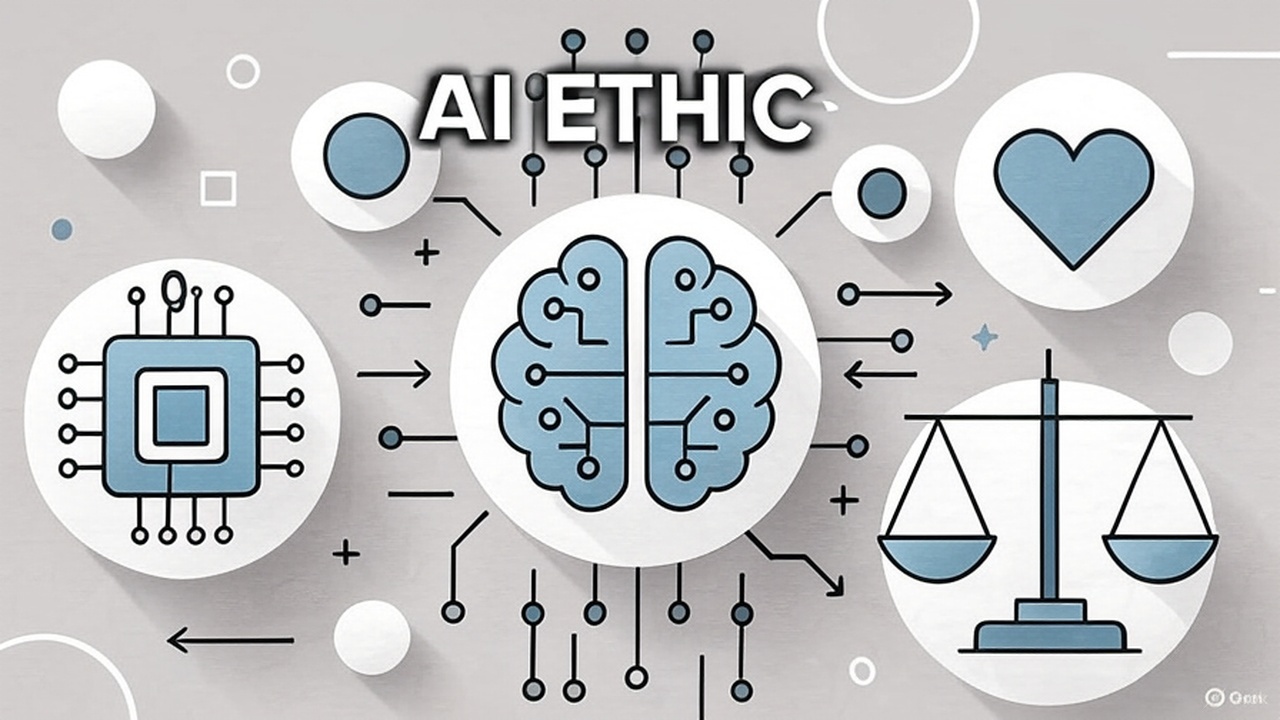
Artificial Intelligence has the power to transform our world, but with great power comes great responsibility. At Nexsynaptic, we believe that ethical considerations must be at the forefront of AI development to ensure technology serves humanity's best interests while maintaining fairness, transparency, and accountability.

These fundamental principles guide responsible AI development and deployment across industries and applications.
AI systems should treat all users fairly and avoid discriminatory outcomes based on protected characteristics such as race, gender, age, or socioeconomic status.
AI decision-making processes should be understandable and auditable, allowing users and stakeholders to comprehend how conclusions are reached.
Clear responsibility chains for AI system outcomes and decisions, with established mechanisms for addressing errors and harm.
Protecting personal data and respecting user privacy in AI systems, ensuring compliance with data protection regulations and user consent.
AI systems should be robust, secure and operate safely across different conditions while maintaining consistent performance standards.
Meaningful human control over AI system decisions and operations, especially in high-stakes scenarios affecting human welfare.
Understanding today's challenges is crucial for developing better ethical AI systems and creating comprehensive solutions.
AI systems can perpetuate or amplify existing societal biases present in training data, leading to unfair outcomes for certain groups.
Regular bias audits, diverse training datasets, bias mitigation techniques, and inclusive development teams
Many AI systems lack transparency in their decision-making processes, making it difficult to understand, validate, or challenge their conclusions.
Explainable AI techniques, model documentation, transparency reports, and interpretability frameworks
AI systems can infringe on privacy rights and enable mass surveillance, raising concerns about personal data protection and civil liberties.
Privacy-preserving techniques, data minimization principles, strong consent mechanisms, and regulatory compliance
Unclear responsibility when AI systems cause harm or make errors, making it difficult to assign liability and ensure redress.
Clear governance frameworks, detailed audit trails, liability assignments, and established appeal processes
Governments worldwide are developing comprehensive frameworks to govern AI development and deployment, setting standards for responsible innovation.
Comprehensive regulation for AI systems in the European Union, categorizing systems by risk level with corresponding regulatory obligations.
Federal directives on responsible AI development and deployment across government agencies and private sector collaboration.
Global ethical framework for artificial intelligence focusing on human rights, dignity, and sustainable development.
International standards for trustworthy AI adopted by OECD member countries to promote responsible innovation.
Practical frameworks and methodologies to help organizations implement ethical AI practices effectively throughout the development lifecycle.
A comprehensive framework for managing AI risks throughout the system lifecycle, providing practical guidance for organizations to identify, assess, and mitigate AI-related risks while promoting trustworthy AI development and deployment.
A systematic methodology for evaluating the ethical implications of AI systems, helping organizations assess potential impacts on human rights, dignity, and social values before and during deployment.
Create cross-functional teams and governance structures for AI ethics oversight.
Evaluate ethical implications and potential risks before system deployment.
Establish regular testing for bias, fairness, and performance across diverse scenarios.
Create comprehensive documentation and transparency reports for AI systems.
Access comprehensive resources and frameworks from leading organizations in AI ethics and governance.
Nexsynaptic is dedicated to promoting ethical artificial intelligence development through comprehensive research, practical frameworks, and industry collaboration. Our mission centers on ensuring that AI technologies are developed and deployed in ways that benefit humanity while respecting fundamental human rights, privacy, and social values.
We believe that responsible AI development requires a multifaceted approach combining technical excellence with ethical considerations, regulatory compliance, and stakeholder engagement. Through our work, we aim to bridge the gap between cutting-edge AI capabilities and the ethical frameworks necessary to guide their responsible implementation across industries and applications.
To advance the development and deployment of ethical AI systems that serve humanity's best interests while maintaining the highest standards of fairness, transparency, accountability, and human oversight.
This comprehensive resource was developed under the strategic leadership of Author MN, who led the complete process from initial conceptualization to final implementation. The curatorial approach included careful selection and fact-checking of all information according to official sources (UNESCO, NIST, EU AI Act, OECD), with particular focus on accuracy of regulatory data and international standards. As lead editor, content was adapted for target audiences of AI professionals, policy makers and organizations implementing ethical AI practices, incorporating expertise in AI ethics applications for digital marketing and practical industry examples. Full editorial responsibility ensures accuracy and quality of all published information.